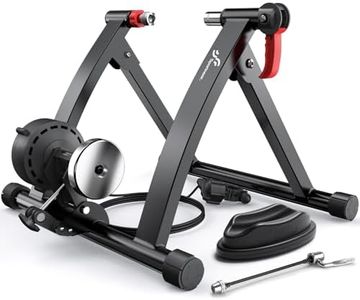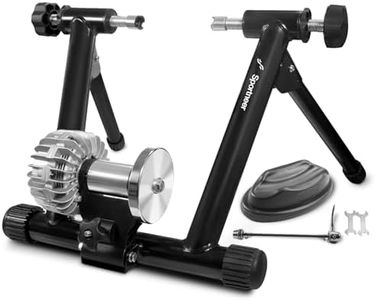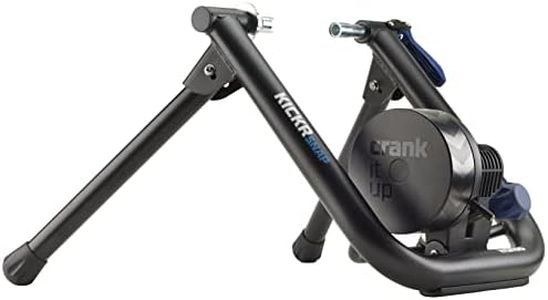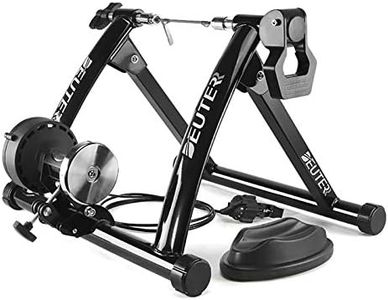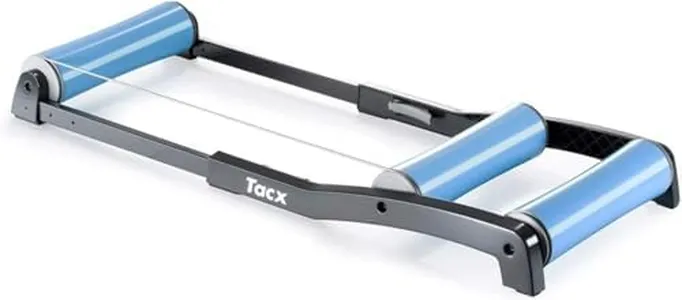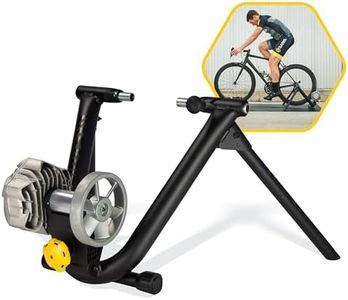We Use CookiesWe use cookies to enhance the security, performance,
functionality and for analytical and promotional activities. By continuing to browse this site you
are agreeing to our privacy policy
10 Best Indoor Bike Trainer
From leading brands and best sellers available on the web.Buying Guide for the Best Indoor Bike Trainer
Picking an indoor bike trainer is all about matching your cycling goals, space, and physical requirements with the right features. Before you buy, think about how often you plan to train, how realistic you want the riding experience to be, and any technical features you might appreciate. Each indoor trainer offers a unique combination of resistance, adjustability, stability, and interactivity, so it's helpful to understand how each of these elements affects your training and enjoyment.Resistance TypeResistance type refers to the mechanism the trainer uses to make pedaling harder as you cycle. The most common types are wind, magnetic, fluid, and direct drive. Wind resistance is simple and affordable but can be noisy. Magnetic trainers are quieter and let you adjust resistance settings. Fluid trainers offer a smoother, more realistic feel, and direct drive trainers replace your rear wheel entirely for very accurate and quiet resistance. Choose wind or magnetic if you want basic training and don’t mind some noise, fluid for realistic road feel, and direct drive for advanced cyclists who prioritize realism, accuracy, and a silent ride.
Noise LevelNoise level is how much sound the trainer makes during use. Trainers can range from quite loud (such as wind units) to nearly silent (like direct drive). If you plan to train in a shared or quiet space, look for lower-noise trainers. Fluid and direct drive are the quietest, so they are good for apartments or homes with others nearby, while mag and wind types suit garages or separate areas where noise isn’t a big issue.
CompatibilityCompatibility means how well the trainer fits different bikes in terms of wheel size, axle type, and cassette. Not all trainers fit all bikes, so check if yours will work, especially if you have a thru-axle, disc brakes, or an unusual frame. Most casual riders can use a standard quick-release compatible trainer, but if you have a modern or high-end bike, check for trainers that accommodate a wider array of axles and gears.
Stability and Build QualityStability and build quality reflect how firmly the trainer holds your bike in place and how sturdy the unit feels. Heavier trainers and those with wide bases are more stable, which is helpful for intense workouts or if you’re a bigger rider. Lightweight, foldable trainers are great for easy storage but may wobble under heavy effort. Decide if you value sturdiness for hard sessions or need something more space-saving.
Interactivity (Smart Features)Interactivity, or smart features, allow the trainer to connect digitally to apps and devices for tracking stats and simulating rides. Basic trainers don’t have connectivity, while smart trainers can communicate with your phone, computer, or cycling apps for interactive workouts. If you enjoy tracking progress, group rides, or realistic virtual courses, a smart trainer is worth considering. Otherwise, a classic model does the job for basic workouts.
Portability and StoragePortability and storage refer to how easily you can move and store the trainer when not in use. Some trainers are heavy and built to stay in place, while others can fold up and tuck away. If you need to clear your space after each session or plan to travel with your trainer, look for something designed for easy movement and compact storage.
Maximum ResistanceMaximum resistance is the highest level of difficulty the trainer can provide. This is important if you want to do very intense workouts like sprints or uphill simulations. Trainers vary widely here; mid-range resistance is enough for most people aiming for fitness and general training, while those training for high-performance cycling or racing should look for units with higher maximum resistance.

